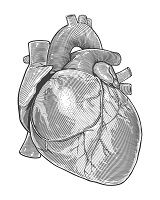Article
Vagus Nerve Stimulation Shows Some Benefit in Heart Failure
Author(s):
An electronic device that stimulates the vagus nerve improved patients’ ability to walk farther without getting winded and was proven to be safe, but it did not affect rates of death or hospitalization, researchers found.

An electronic device that stimulates the vagus nerve improved patients’ ability to walk farther without getting winded and was proven to be safe, but it did not affect rates of death or hospitalization, researchers found.
Reporting at the American College of Cardiology’s 65th Scientific Session & Expo in Chicago, IL, Michael Robert Gold, MD, PhD of the Medical University of South Carolina, Charleston, SC and colleagues said their multi-center trial known as INOVATE-HF had disappointing results.
Known as the CardioFit system, the implanted device is meant for patients with severe heart failure and as an alternative to a left ventricular assist device or transplant.
CardioFit simulates the parasympathetic nervous system. It has a lead that senses the heart beat and a lead that sends electrical stimulation to a cuff around the vagus nerve, the primary conduit between the parasympathetic nervous system and the heart.
There were 707 patients in the trial, of whom two-thirds were randomly selected to get the implant.
All patients also received standard therapies for their heart disease throughout the trial.
The CardioFit system was turned off for the first month after it was implanted, then gradually turned up as patients got used to it.
Though quality of life was deemed better by most patients who got the device and 47 % of the treated patients scored higher on the Kansas City Cardiomyopathy Questionnaire evaluation of quality of daily life than did controls, the study’s endpoints of achieving fewer deaths and serious events were not met.
The researchers were pleased that the patients with the implant improved the distance they could walk by an average of 28.2 meters, a significant gain since the control group saw a decline in that distance, an average loss of 4.6 meters.
“Given the encouraging safety outcomes and the tantalizing secondary endpoint data, out study suggests that there may be specific groups of patients who may benefit from this therapy while others may not,” Gold said.
But it is clear the device will not benefit all patients.
One possibly confounding factor in the secondary benefits is that patients knew who got the device and who was in the control group, so a placebo effect could be at work in the improvements in quality of life and walking stamina results reported.





